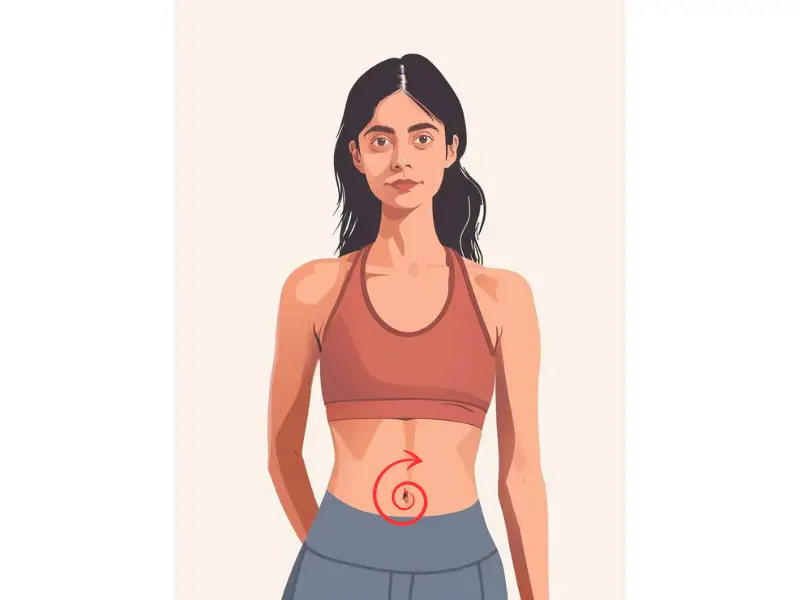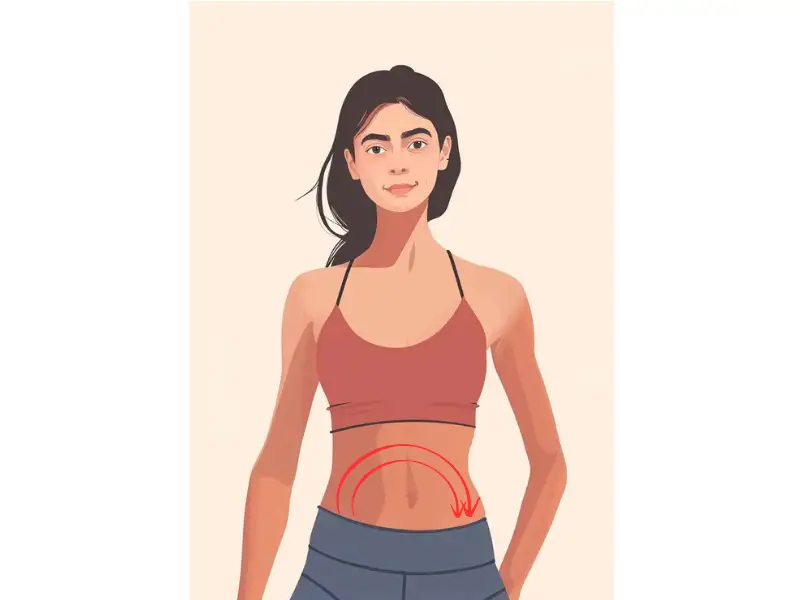Gua sha body massage is an effective technique rooted in Traditional Chinese Medicine (TCM) that can be particularly beneficial for a variety of stomach problems. By scraping the skin with a smooth tool, gua sha helps improve circulation, relieve muscle tension, and stimulate the body’s natural healing processes. When applied to the abdomen, gua sha can help ease digestion, release trapped energy (qi), and alleviate discomfort caused by various digestive issues. If you’re new to this practice, check out our gua sha basic guide to get started.
Here are eight common stomach issues that gua sha body massage can help with, along with detailed instructions on the appropriate stroke techniques.
1. Bloating and Gas
Bloating occurs when gas or fluid gets trapped in the intestines, causing discomfort and swelling. Gua sha can help by stimulating the intestines and encouraging the movement of gas through the digestive tract.
- Start Point: Lower right side of the abdomen, just above the hip bone.
- End Point: Upper left side, below the ribcage.
- How to Stroke: Use broad, upward diagonal strokes, starting from the lower right abdomen and moving to the upper left. After completing this, repeat the stroke in the opposite direction from the lower left to the upper right. These diagonal strokes help push trapped gas through the intestines and reduce bloating. Use light to moderate pressure and repeat several times for best results.

“For different skin types, it’s important to choose the right oil before performing gua sha. For sensitive or acne-prone skin, squalane oil and jojoba oil work best. For dry skin, argan oil and jojoba oil are recommended, while oily skin benefits from grapeseed oil and jojoba oil.”
— Ms. Mai Sogawa, Senior TCM Therapist
Using the right oil can also protect the skin from friction and enhance the effectiveness of your gua sha strokes.
2. Indigestion
Indigestion, or dyspepsia, can result in discomfort after eating, including symptoms like nausea, bloating, and heartburn. Gua sha improves digestion by increasing blood flow to the stomach and intestines, helping food break down more effectively.
- Start Point: Right side of the navel (belly button).
- End Point: Below the ribcage, in a circular path around the navel.
- How to Stroke: Start by making clockwise circular strokes around the navel. Begin with small circles and gradually increase their size as you move outward toward the ribcage. These strokes mimic the natural flow of digestion, helping the stomach break down food and absorb nutrients better. Use moderate pressure and perform the circular strokes for several minutes.
3. Constipation
Constipation is caused by sluggish bowel movements, which can lead to bloating and discomfort. Gua sha stimulates the muscles around the intestines, encouraging peristalsis (the contractions that move food through the intestines).
- Start Point: Lower right abdomen (above the hip bone).
- End Point: Lower left abdomen (above the pelvic bone).
- How to Stroke: Use a “U”-shaped stroke, following the path of the large intestine. Start at the lower right side of the abdomen and stroke upward toward the ribs, then across the upper abdomen, and finally down along the left side. Repeat this stroke multiple times, using moderate pressure. The motion promotes the natural flow of waste through the colon, relieving constipation.
4. Irritable Bowel Syndrome (IBS)
IBS is a chronic condition that causes symptoms like stomach cramps, bloating, and irregular bowel movements. Gua sha helps relieve IBS symptoms by reducing inflammation, relaxing the abdominal muscles, and improving overall digestion.
- Start Point: Lower right abdomen, near the hip bone.
- End Point: Upper left side, below the ribs.
- How to Stroke: Start with broad diagonal strokes, moving from the lower right to the upper left abdomen. After completing several strokes in this direction, switch to the opposite diagonal, from the lower left to the upper right. These strokes help reduce cramping and inflammation.
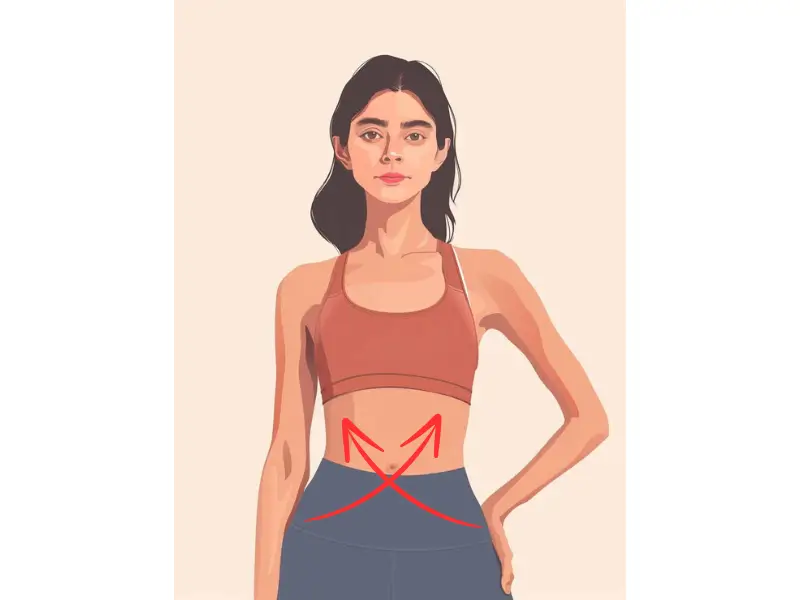
In addition, you can add circular strokes for enhanced relaxation:
-
- Circular Strokes: Start at the center of the abdomen near the navel and make clockwise circles, gradually expanding the size of the circles until they cover most of the abdomen. This motion helps ease cramping and promote smooth digestion. Use moderate pressure, and repeat the circular strokes for several minutes.
This combination of diagonal and circular strokes helps calm the digestive system and relieve IBS symptoms.

5. Abdominal Pain from Menstrual Cramps
Menstrual cramps can cause significant pain in the lower abdomen, often mistaken for digestive discomfort. Gua sha helps by increasing blood flow to the abdominal area and relaxing the muscles, relieving cramping.
- Start Point: Lower abdomen, just above the pubic bone.
- End Point: Just below the navel.
- How to Stroke: Use gentle upward strokes from the lower abdomen toward the navel. Apply light pressure and focus on slow, soothing movements to relax the muscles and relieve cramping. There is no need to stroke downward; the goal is to promote circulation and reduce tension by guiding energy upward.
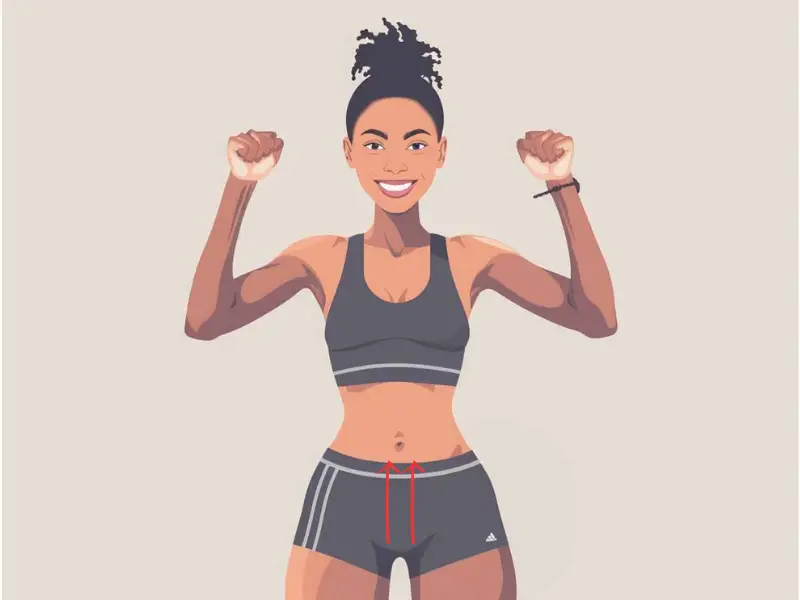
6. Acid Reflux (GERD)
Acid reflux, or GERD, occurs when stomach acid backs up into the esophagus, causing discomfort and heartburn. Gua sha helps by encouraging better digestion and preventing acid buildup in the stomach.
- Start Point: Center of the abdomen, just below the ribcage.
- End Point: Upper abdomen, moving outward toward the sides.
- How to Stroke: Use outward strokes, starting from the center of the upper abdomen and moving horizontally toward the sides. This motion helps encourage food to move downward through the digestive tract, reducing acid reflux. Use light pressure, and repeat the strokes several times. No need to stroke in the opposite direction.
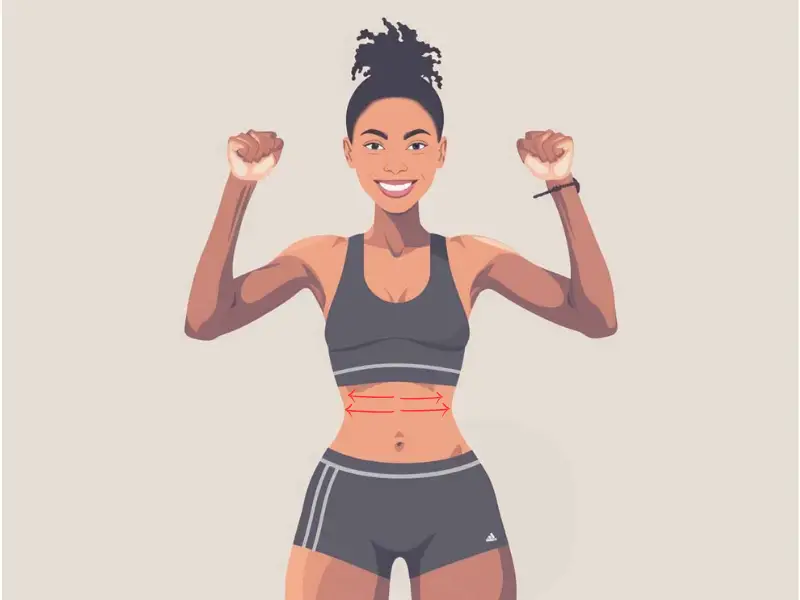
7. Poor Appetite
A lack of appetite can be caused by various factors, including stress, illness, or digestive dysfunction. Gua sha can help stimulate the digestive system and increase hunger by promoting the secretion of digestive enzymes.
- Start Point: Just below the ribcage.
- End Point: Center of the abdomen, near the navel.
- How to Stroke: Use downward strokes from just below the ribcage toward the navel. These strokes stimulate the digestive organs, encouraging the release of digestive juices and improving appetite. Apply moderate pressure and repeat several times. There is no need to stroke upward, as the goal is to guide energy downward toward the digestive organs.
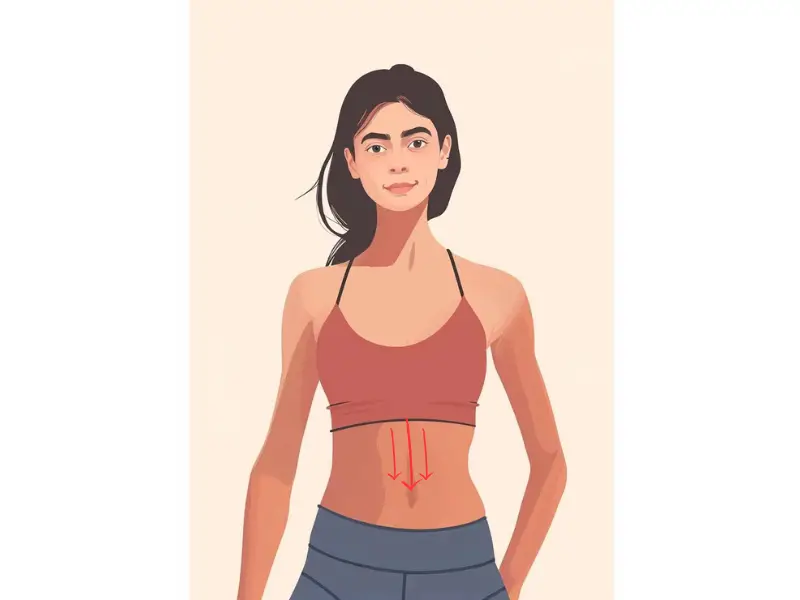
8. Stomach Inflammation (Gastritis)
Gastritis occurs when the stomach lining becomes inflamed, leading to pain and discomfort. Gua sha helps reduce inflammation by improving blood circulation and lymphatic drainage, helping to eliminate toxins and excess fluid.
- Start Point: Upper abdomen, just below the ribcage.
- End Point: Lower abdomen, just above the pubic bone.
- How to Stroke: Use long, gentle downward strokes from the upper abdomen to the lower abdomen. Apply light pressure to avoid further irritation of the stomach lining. This stroke helps reduce inflammation by promoting circulation and lymphatic drainage, aiding the body’s natural healing process.
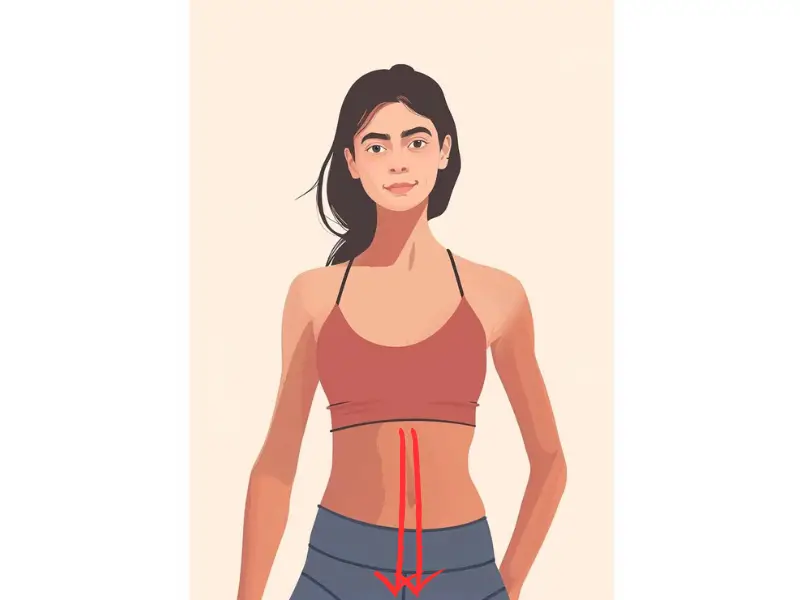
“For different skin types, it’s important to choose the right oil before performing gua sha. For sensitive or acne-prone skin, squalane oil and jojoba oil work best. For dry skin, argan oil and jojoba oil are recommended, while oily skin benefits from grapeseed oil and jojoba oil.”
— Ms. Mai Sogawa, Senior TCM Therapist
How Gua Sha Strokes Aid Digestive Health
Gua sha works by promoting blood flow, releasing muscle tension, and stimulating the movement of qi through the digestive system. Here’s why these strokes are effective for stomach issues:
- Improved Circulation: Gua sha boosts blood flow to the digestive organs, ensuring they receive the oxygen and nutrients needed for proper functioning.
- Muscle Relaxation: The strokes help release tightness in the abdominal muscles, which can be caused by digestive issues or stress.
- Qi Stimulation: In TCM, digestive issues are often caused by stagnant or blocked qi. Gua sha helps to unblock this energy, promoting balance and overall well-being.
- Lymphatic Drainage: Gua sha enhances lymphatic drainage, helping the body eliminate excess fluid and toxins, reducing bloating and inflammation.
By practicing gua sha on the stomach, you can relieve many common digestive problems naturally. Always apply a suitable oil to reduce friction and ensure a smooth, comfortable massage experience. Consult a healthcare professional if you have a chronic digestive condition or are unsure about using gua sha at home.

Try our Anti-Aging Gua Sha Tool designed to bring out your skin’s natural glow.
Best Gua Sha Product- Anti-Aging: The tool is designed to target 11 specific aging signs such as wrinkles and sagging skin. By following the 7-step routine, users can improve skin firmness and reduce fine lines naturally.
- Enhances Skincare Routine: It works effectively with serums and lotions, boosting absorption and efficacy of skincare products.
- Visible Skin Improvement: Users can expect a smoother complexion, reduced puffiness, and a more youthful appearance.
 P. Sze
P. Sze 
